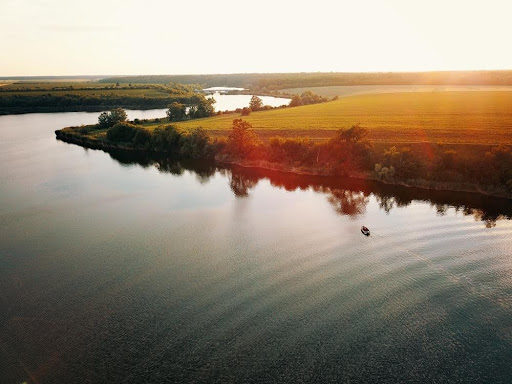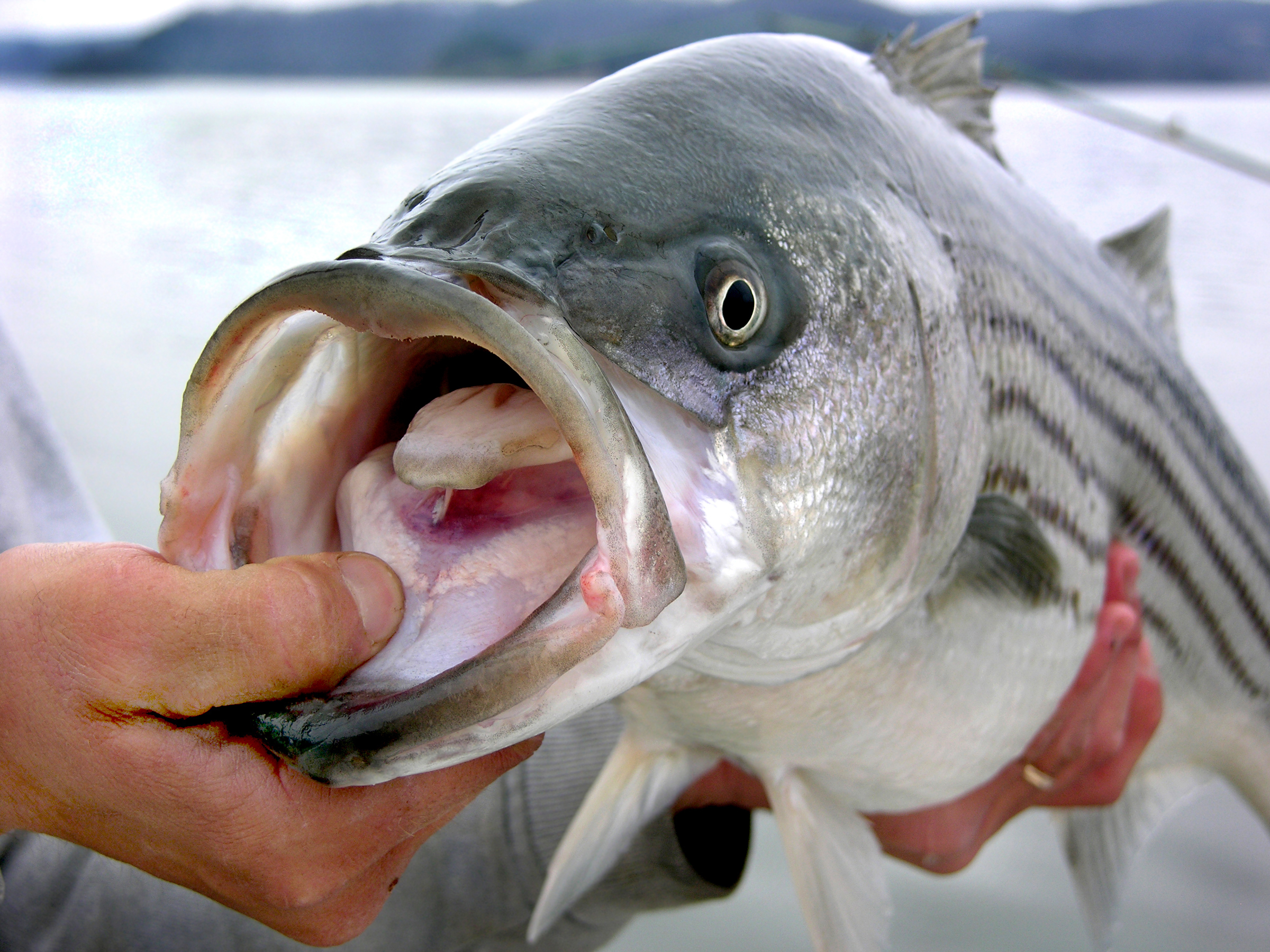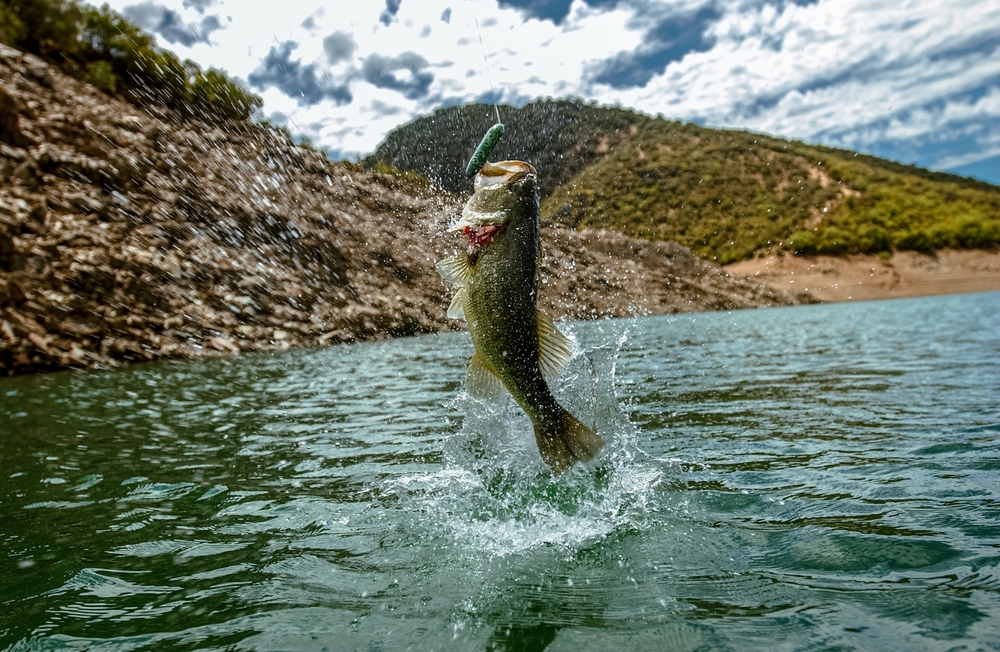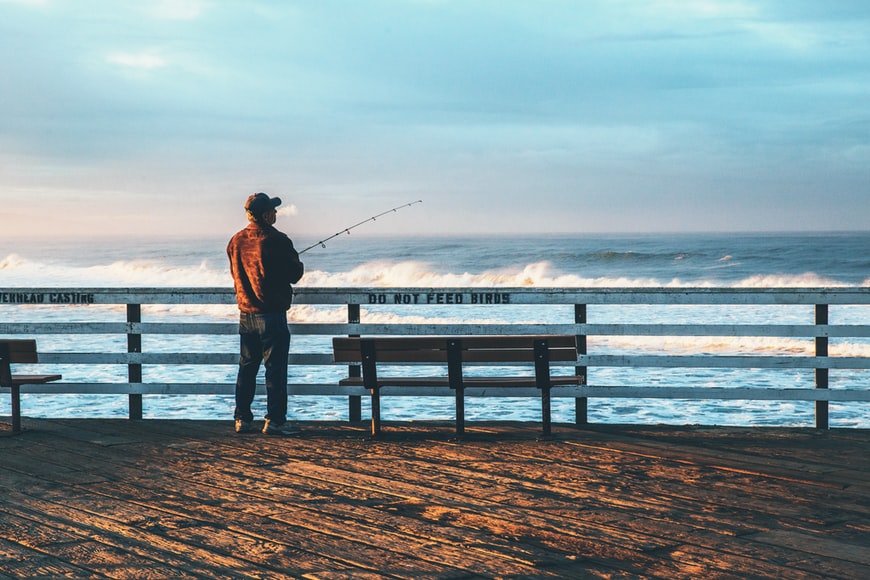Bass vs Trout Fishing: Ultimate Comparison
Bass fishing and trout fishing are two of the most popular types of fishing in the US, but while you might think it’s as simple as targeting different fish, there are actually a ton of differences that will make or break your experience depending on how well you adjust. Also, one or the other might not be the right style for you.
Today, we want to take an in-depth look at these two favorite pastimes, and we’ll compare the differences between the two. By the end, you should have a better idea of which species you want to focus on, or if you already made the switch from one to the other, you should have a reasonable idea of what you’re doing wrong and how to change your approach.
Let’s get started with our ultimate comparison: bass vs trout fishing.
Newsletter Signup
1: Fish Behavior
This is the biggest difference in terms of how your approach will have to be changed. Bass and trout behave in completely different ways.
Bass are predators, and they tend to be the most vicious predator in most freshwater lakes in the US. There are some species that can out-compete them, but they tend to be very localized; whereas bass proliferates all over the nation and beyond.
As such, bass tends to be a lot more aggressive with how they bite your lure, they want larger meals, and they put up a ton more fight than a trout. This tendency will affect pretty much everything else we talk about today. So, keep that in mind.
Bass fish are known for their relatively simple behavior patterns. They’re certainly not as cautious or picky as musky or other popular fish. So, a lot more tactics will work on them compared to trout.
On the other hand, trout are very delicate and finicky fish. They don't tend to want to go after giant meals, and they can put up a fight on the right gear, but they are nowhere near as strong as bass, and they tend to be a little pickier about what they eat; you're certainly not going to catch one by dapping a bare hook on the water's surface or tossing a barely-finished kitchen spoon lure like you can with some exceptionally dumb bass.
2: Tactics
As we said, there are a lot of different strategies that work with bass. The tackle industry wouldn’t be nearly as profitable if bass were only susceptible to certain tactics. Trout, on the other hand, tend to be a lot more specific about what they’ll respond to.
Since bass fishing has so many viable tactics, we’ll cover that first. Then, we'll break down your options for trout fishing.
Bass Fishing Tactics:
Since bass aren’t picky and you can trick them in various ways, there are a lot of tactics you can use to get them on the line. This is one reason they’re so popular as game fish. If something isn’t working, you can switch between a ton of other strategies to get a bite or mix things up.
1: Bottom Jigging
On a day when the bass is sticking around the bottom due to the weather or the spawning conditions, bottom jigging is extremely effective. As you’ll see, the tactic used is typically chosen based on the conditions in the environment.
Bottom jigging is when you use a jig lure to bounce around on the bottom and mimic things such as crawfish, bluegill hunting for small crustaceans, and other bottom-dwelling food sources for bass. There are a lot of bass jigs on the market, but they all tend to align with the same general concept.
2: Inline Spinners
As you’ll see in a moment, this is one strategy that also works well with trout. You just have to pick the right size. This is why we recommend every angler have at least a few good inline spinners in their tackle box. They’re super versatile.
This strategy is one of the easiest with either species, but thanks to the flash and vibration these give off, bass love them and attack them aggressively.
For this, you just chuck it out there and reel it back at varying speeds depending on what the bass wants on that given day. The same goes for trout, but we’ll talk about that more specifically, later.
3: Topwater Lures
There are topwater lures for trout, but they’re very different than what you use for bass, and they fall into an entirely different category in the eyes of most anglers. When we say “topwater lures” in this context, we’re talking about floating frogs, mice, poppers, and swimbaits that stay on top or just beneath the water’s surface.
This is an extremely fun way to fish, and it’s most commonly used solely for bass.
Because bass is so aggressive, they tend to explode out of the water in dramatic fashion to take these lures into their gullets; often leading to the famous "flair" of their gills that makes a rather basic-looking fish look absolutely monstrous.
However, this tactic is typically reserved for early morning bass fishing when the bugs are still bobbing around on the surface of the water and the bass are highly active.
4: Varying Retrievals with Soft Plastics and Various Hard Baits
Finally, bass fishing really opens up when you get into soft plastics and hard baits. There are so many on the market due to the diverse habits and diets of bass that you’ll probably never try them all, and each one works a little differently.
These lures provide a lot of flexibility when it comes to how you use them, and we’ll take up the entire length of this guide going over each one, but know this. They singlehandedly provide a far more varied experience than trout fishing.
Trout Strategies and Differences
Trout are very different when compared to bass. They’re nowhere near as aggressive, have pickier eating habits, and as such, require very specific strategies to catch them effectively. Don’t get us wrong. If you’re fishing in trout-stocked lakes and use basic bluegill tactics, you’ll likely catch a trout here and there, but here are the methods you’ll need to use to specifically target them.
1: Fly Fishing
This is the main difference. When people think of fishing for trout, they usually think about fly fishing. This is the equivalent of top-water fishing for bass, but the lures are special. They’re basically hooks with hair or synthetic strings tied to them. They’re so light that they require a fly fishing setup to use effectively.
Just using a fly rod is a completely new skill you’ll have to learn. You don’t have to for trout, but it’s common.
2: Spinning Equipment with Special Lures
Another common approach for people who don’t have fly rods or don’t care to use them is to pair ultra-light spinning equipment with special trout lures. Trout lures are typically very lightweight, resemble thin redworms or strings of fish eggs, and are fished with a variety of rigs similar to bass fishing setups but downsized.
Other equipment used for trout tends to come in the form of pre-formed edible baits like “Crappie Bites”. These resemble colorful corn pellets, and they’re used the same way you’d use canned corn for bluegill.
That’s another cool factor that you can consider when trout fishing. If you’re an avid ultralight fisherman, trout lures on spinning equipment tend to attract a lot of sunfish, and occasionally, you’ll even get a small bass or crappie on the line. So, if the trout aren’t biting, or you go to a lake that doesn’t have trout, you can still rest easy trusting you’ll catch plenty of fish and have a lot of fun doing so. They just won’t likely be as big.
3: A Focus on Natural Bait
Another big difference is that modern trout fishermen often focus on natural bait such as corn or specially formulated baits like Crappie Bites and Trout Nibbles.
Bass obviously eats real food, but the average bass angler doesn’t use live bait or natural bait. For the sport of it, and to minimize non-bass catches, bass anglers focus on artificial lures specifically made to trigger a bass’s sensitivities.
If you’re not comfortable with lures or want a more relaxed experience with less movement, trout fishing can be the perfect experience for you.
Bass vs. Trout Fishing: Differences in Fishing Approach and Philosophy
Because these two species behave so differently, entirely different approaches and philosophies are applied to each one.
With bass being highly aggressive and fairly easy to trick, it’s not as much of an exercise in patience. Sure, you’ll have days where you get skunked, but most bass anglers focus on skimming a small area and moving on. They’re constantly on the move, and when a bass bites down, the fight can be brutal. There are no special precautions taken; it’s just a man and his rod flat-out brawling against the lake’s top predator. With bass, it’s about the fight, mostly.
With trout, things are slower and more methodical. Chucking lures everywhere and using sporadic retrieval methods isn’t optimal. It’s usually a matter of throwing in the lure and letting the natural movement of the water do most of the work. Trout simply aren’t as aggressive. Also, they’re very delicate fish. While you need to take care of any bass you catch and show them the respect they deserve to maximize long-term survival rates, that is even more important with trout.
Mishandling trout is almost certainly a death sentence, and they often won’t even make it back into the water if an irresponsible angler gets ahold of them. They’re so delicate that many fisheries have rules with serious consequences if you’re caught mishandling trout.
When it comes to trout, many anglers like them because it’s a mental game that focuses on perfecting your strategy.
With all that in mind, we can talk about the CPR philosophy; otherwise known as catch, photograph, and release. With bass, we are strictly CPR supporters. It’s a game fish, and if we want to preserve it for future generations, we need to let it go and treat it right.
Trout is a little different. CPR is best, especially in areas that aren’t stocked and rely solely on natural breeding to restock the trout supply, but many areas have trout seasons where keeping the trout is an option within a long list of restrictions. They’re not seen as game fish in the same way as bass are despite being highly popular.
Differences in Fishing Opportunities
When thinking about bass vs trout fishing, this is usually the most important factor for anglers. After all, few anglers solely fish for one species all the time. There is a lot of fish, and mixing things up every once in a while keeps it interesting.
However, you can’t catch a species that isn’t within your means to get to.
Bass is all over the US, and they’ve been moved to other parts of the world because of how fun they are to catch. So, practically everyone can target bass and enjoy the thrill of getting one on the line. Some states have better bass populations, but you’ll be hard-pressed to find a pond or lake in the US that doesn’t have largemouth in it.
On the other hand, trout aren’t nearly as common. They tend to be in high-altitude ponds with colder water, and as such, they’re usually in the northern part of the country or around mountain ranges. You’ll have quite a bit of trouble going trout fishing if you’re on the southern tip of Texas.
So, depending on where you live, your choice might have been made extremely easy without you having to worry about other factors. Even if you’re not near trout, we still recommend taking a road trip sometime and seeing what it’s like to target them. Even the most dedicated bass anglers will get enjoyment from trout fishing.
Find Bass and Trout Near You to Try for Yourself
We hope that you made an informed decision thanks to our ultimate comparison of bass vs. trout fishing. However, if you want to try both, we don’t blame you. Any time you’re on the water, you’re going to have a great time.
Moreover, to further enhance your fishing adventures, download the BassForecast Fishing app to find the best spots for bass fishing, get tips on how to target them, and enjoy pro features such as tackle tips, detailed maps, real-time weather data, spot-on-solunar, and more.













.png)
.png)